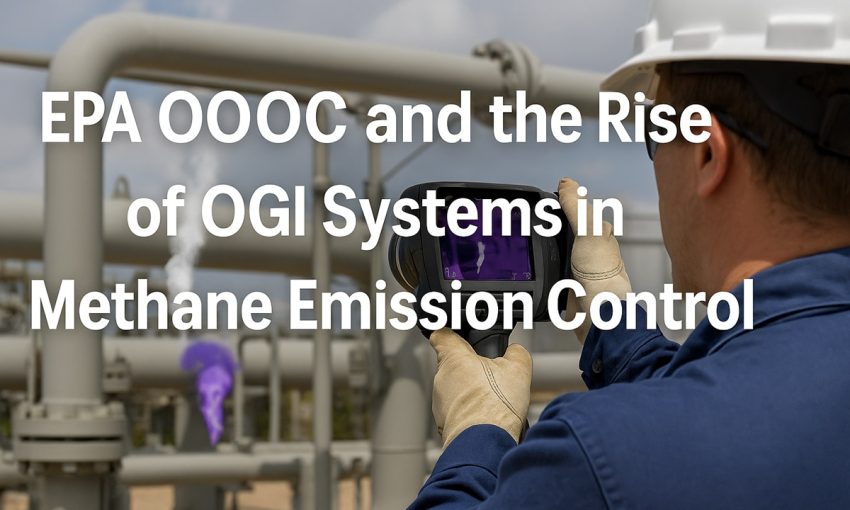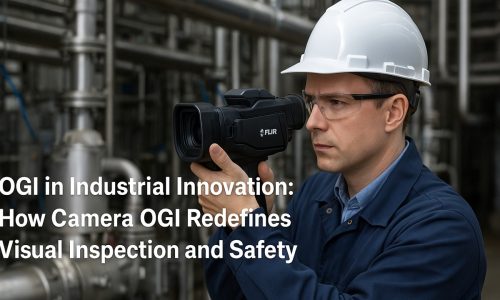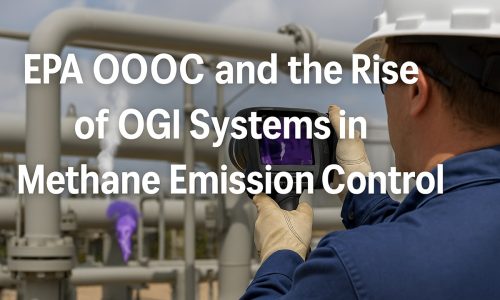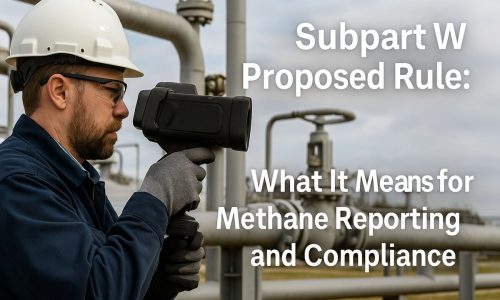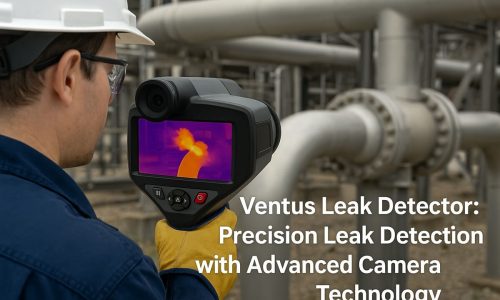Introduction: OOOOc — The Next Step in Methane Regulation
As global attention on methane intensifies, the U.S. Environmental Protection Agency (EPA) continues to roll out new standards aimed at reducing emissions from the oil and gas sector. Following the introduction of OOOOb, the agency is now advancing OOOOc, a complementary rule targeting existing oil and gas sources rather than new facilities.
The EPA OOOOc rule represents a major milestone in U.S. methane policy. While OOOOb focuses on new and modified sources, OOOOc extends those same standards to the millions of existing wells, pipelines, and production sites currently in operation. This marks a turning point for operators, who must now adopt advanced detection and monitoring technologies to ensure compliance.
At the center of this new regulatory framework are OGI systems — advanced optical gas imaging platforms capable of detecting, visualizing, and quantifying methane emissions in real time. For many operators, integrating OGI systems isn’t just a compliance measure; it’s a strategic step toward sustainability and operational excellence.
Understanding EPA OOOOc
OOOOc is part of the EPA’s New Source Performance Standards (NSPS) under the Clean Air Act. It complements OOOOb, expanding methane and VOC regulations to include existing sources across upstream, midstream, and downstream segments of the oil and gas industry.
The rule is designed to close regulatory gaps and establish a uniform national standard for methane reduction. Key objectives include:
-
Reducing emissions from existing oil and gas infrastructure.
-
Encouraging the use of continuous monitoring technologies.
-
Aligning with global methane reduction goals (such as the Global Methane Pledge).
-
Ensuring fair enforcement through performance-based compliance options.
By applying to existing sources, OOOOc impacts a far larger segment of the industry than OOOOb. This makes it one of the most consequential climate regulations in U.S. history — and one that will accelerate adoption of technologies like OGI systems.
The Role of OGI Systems in Meeting OOOOc Requirements
The EPA has identified Optical Gas Imaging (OGI) as one of the most effective tools for detecting fugitive emissions. Unlike point sensors or manual sniffers, OGI systems visualize gas leaks as visible plumes, allowing operators to detect and confirm emissions quickly.
Here’s why OGI systems are at the core of OOOOc compliance:
1. Visual Leak Detection and Verification
OGI systems allow technicians to see leaks in real time, reducing guesswork and enabling faster repairs. This visual confirmation is crucial for compliance documentation and verification.
2. High Sensitivity for Methane and VOCs
Modern OGI systems can detect even minute methane concentrations, making them ideal for meeting OOOOc’s strict detection thresholds.
3. Integration with Continuous Monitoring Programs
Under OOOOc, operators may choose between periodic OGI surveys or continuous monitoring setups. Fixed or drone-mounted OGI systems can feed data directly into monitoring networks, ensuring 24/7 compliance.
4. Data Transparency and Reporting
The EPA’s new framework emphasizes measurable, verifiable data. OGI systems support this by providing both visual and quantitative data, which can be logged, analyzed, and submitted during audits.
5. Adaptability Across Facility Types
From small production wells to massive compressor stations, OGI systems can be scaled and customized to fit diverse operational environments.
Comparing OOOOb and OOOOc
| Feature | OOOOb (New Sources) | OOOOc (Existing Sources) |
|---|---|---|
| Coverage | New and modified facilities | Existing oil and gas infrastructure |
| Purpose | Prevent future leaks | Detect and reduce current emissions |
| Technology Focus | OGI and continuous monitoring | OGI and retrofit monitoring programs |
| Implementation Timeline | Immediate upon new construction | Phased rollout over several years |
| Regulatory Impact | Permitting and design compliance | Operational and maintenance compliance |
Both rules complement each other, forming a unified methane control strategy across the U.S. oil and gas industry.
OGI Systems: Beyond Compliance
While OOOOc mandates detection, forward-thinking companies see OGI systems as more than just regulatory tools. They represent a long-term investment in operational safety, efficiency, and corporate responsibility.
1. Proactive Maintenance
OGI systems enable early detection of leaks before they escalate into costly failures, preventing equipment damage and downtime.
2. ESG Reporting and Investor Confidence
Visual methane data from OGI systems can be directly incorporated into ESG disclosures, strengthening environmental transparency and credibility with stakeholders.
3. Worker Safety
Remote operation and thermal imaging reduce the need for workers to enter potentially hazardous areas, significantly lowering risk exposure.
4. Cost Efficiency
While the initial setup of OGI systems requires investment, the long-term savings in lost product recovery, reduced penalties, and optimized maintenance are substantial.
Integrating OGI Systems into Methane Monitoring Strategies
To fully comply with OOOOc and future EPA standards, companies are moving toward integrated methane management ecosystems. This involves connecting OGI systems with complementary technologies and digital platforms.
Integration Examples:
-
AI and Machine Learning – Analyzing OGI video feeds to detect leaks automatically.
-
IoT Networks – Linking OGI cameras to fixed sensors for hybrid detection coverage.
-
Cloud Platforms – Centralizing emission data for ESG reporting and compliance tracking.
-
Drones and Robotics – Expanding OGI coverage to remote or hard-to-access infrastructure.
Such integrations make methane management not only more effective but also more scalable, ensuring compliance across vast and complex asset networks.
OOOOc and Global Climate Goals
The EPA’s OOOOc rule aligns closely with international efforts to reduce methane emissions by 30% by 2030. Methane reduction is considered one of the fastest, most cost-effective ways to slow global warming, and OGI-based detection plays a key role in achieving this.
By implementing OGI systems, U.S. operators contribute directly to these global goals — setting an example for other countries while ensuring compliance at home.
Preparing for OOOOc Implementation
With OOOOc expected to take effect soon, operators should start preparing now.
Recommended Steps:
-
Audit existing detection programs. Identify gaps in current leak detection and repair (LDAR) workflows.
-
Upgrade to certified OGI systems. Ensure all detection technology meets EPA calibration and performance standards.
-
Implement continuous monitoring. Deploy OGI cameras in high-risk zones for real-time data capture.
-
Enhance data management. Integrate OGI data streams into centralized reporting and analytics platforms.
-
Train teams. Ensure field personnel and compliance managers understand OOOOc requirements and OGI system operation.
By adopting these steps proactively, companies can reduce risk, lower compliance costs, and position themselves as leaders in environmental responsibility.
OOOOc and OGI Systems — The Future of Compliance
EPA’s OOOOc rule represents more than just another regulation; it’s a declaration that methane management must evolve. The rule’s emphasis on real-time, verifiable, and continuous data transforms how the energy sector measures success — shifting from periodic compliance to ongoing environmental accountability.
OGI systems are the cornerstone of this transformation. They combine detection precision with visual evidence, bridging the gap between data and decision-making. For companies that embrace these technologies early, compliance with OOOOc won’t just be an obligation — it will be a competitive advantage, defining the new era of sustainable operations.
As the world accelerates toward cleaner energy, OGI systems will continue to illuminate the path forward — literally turning invisible emissions into visible progress.

